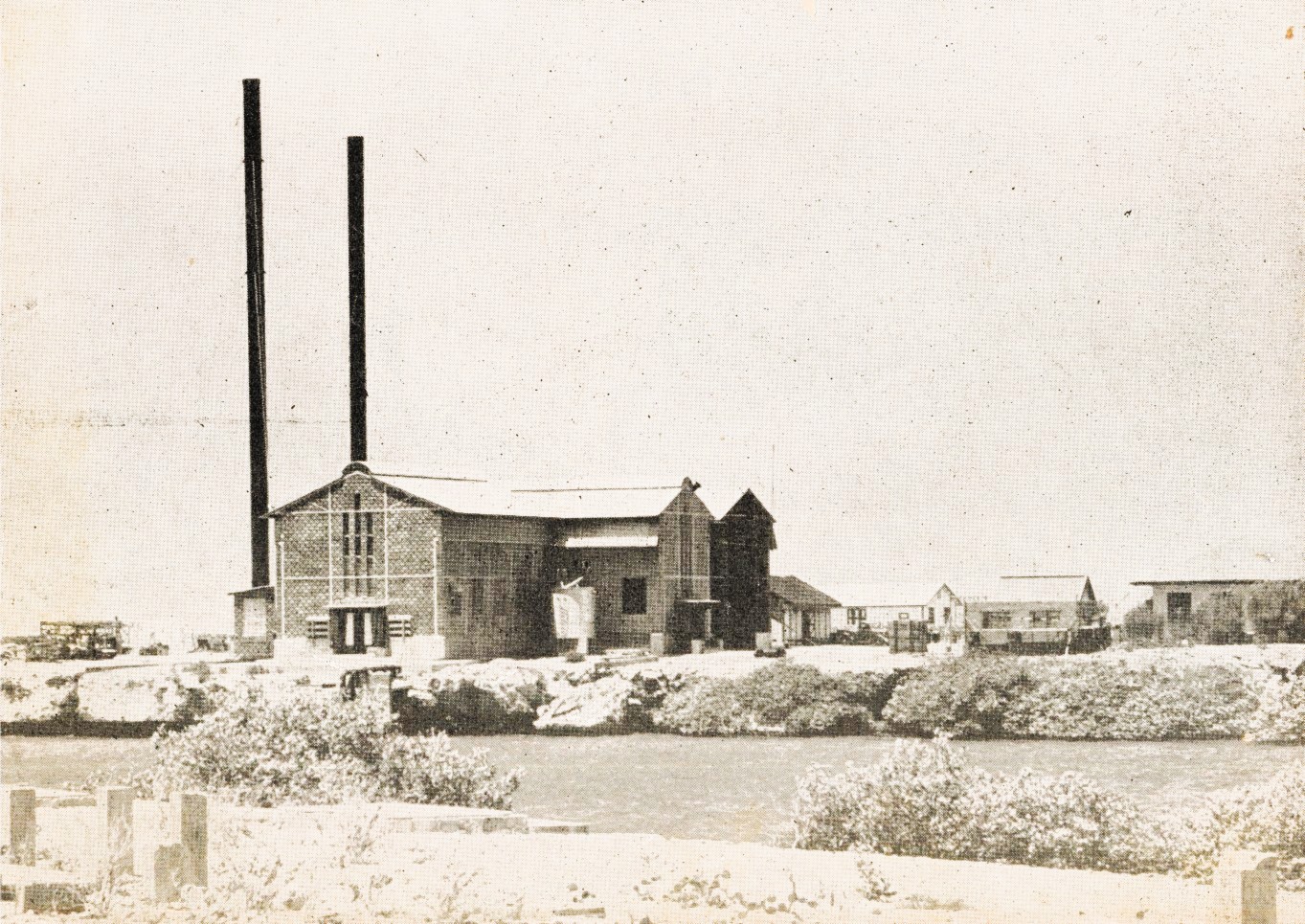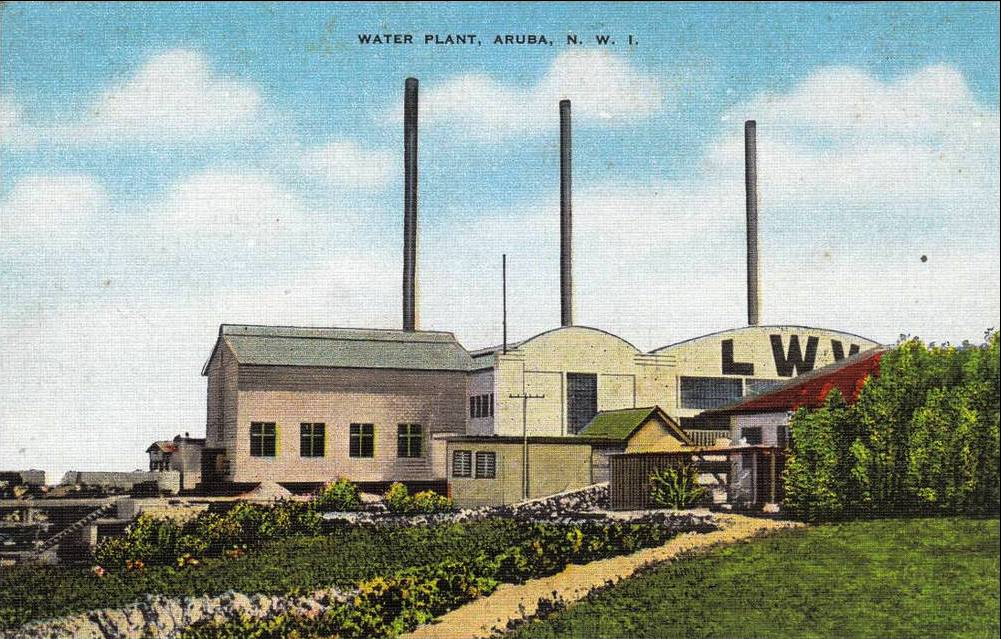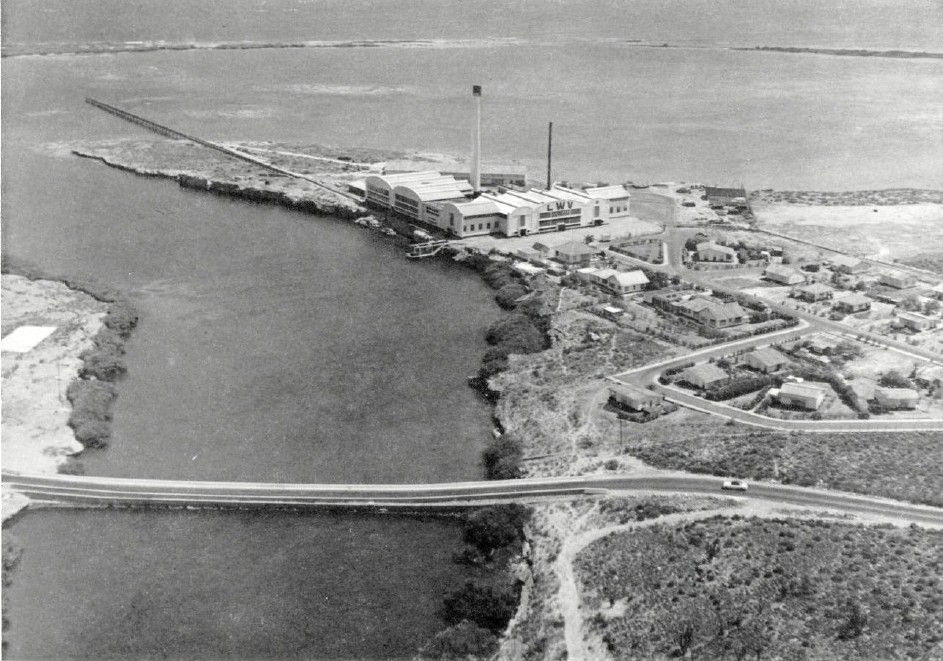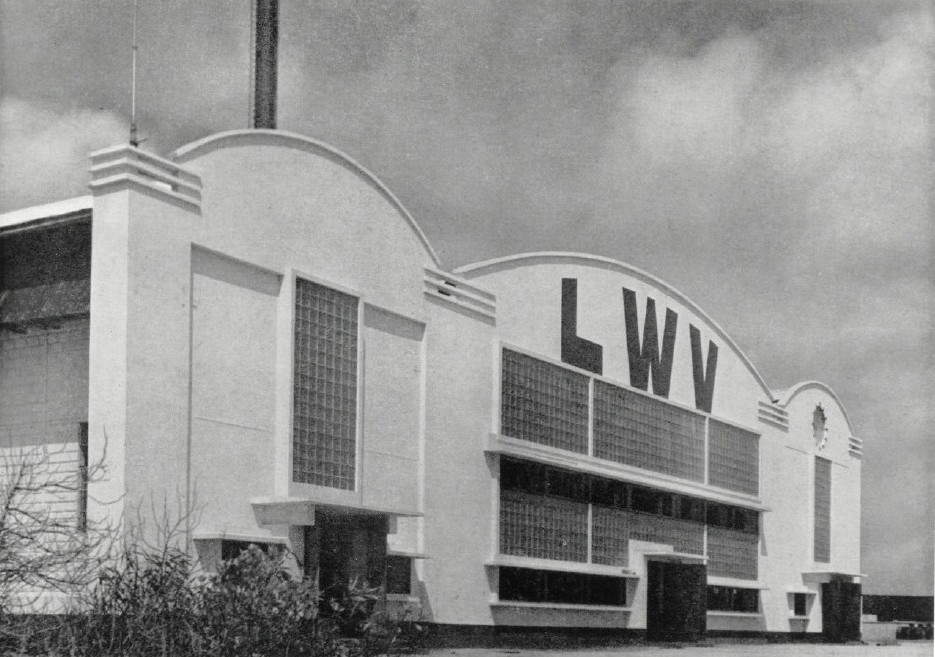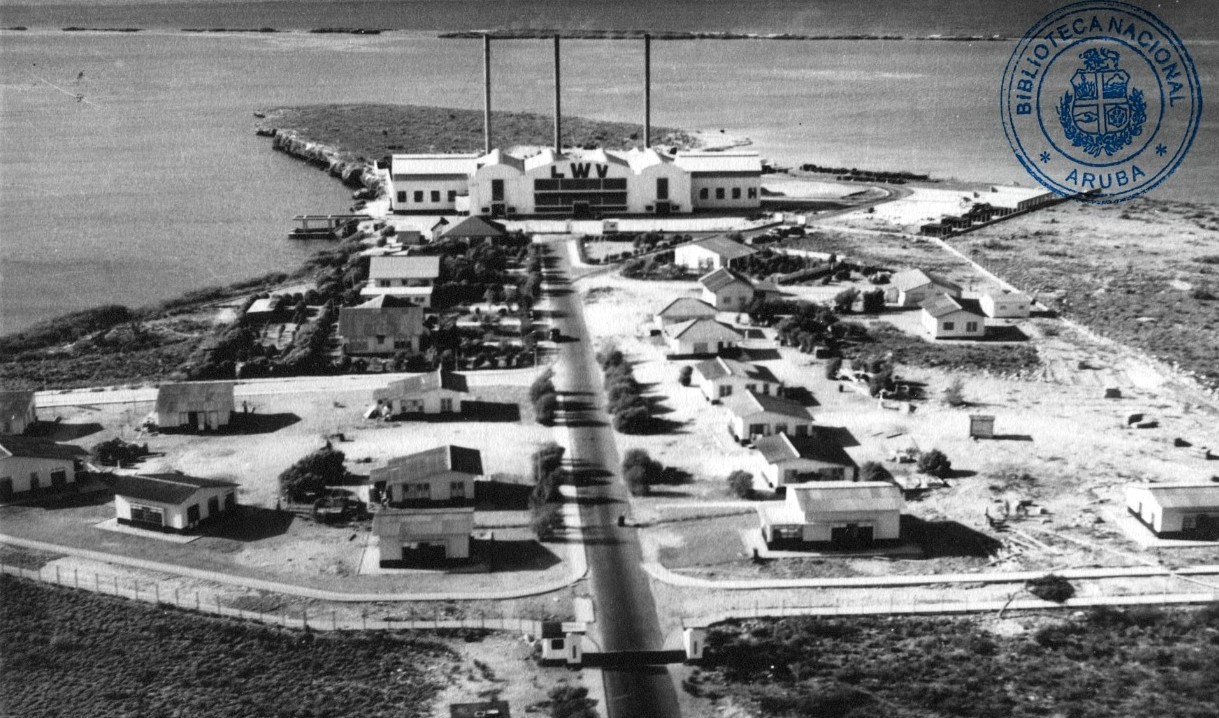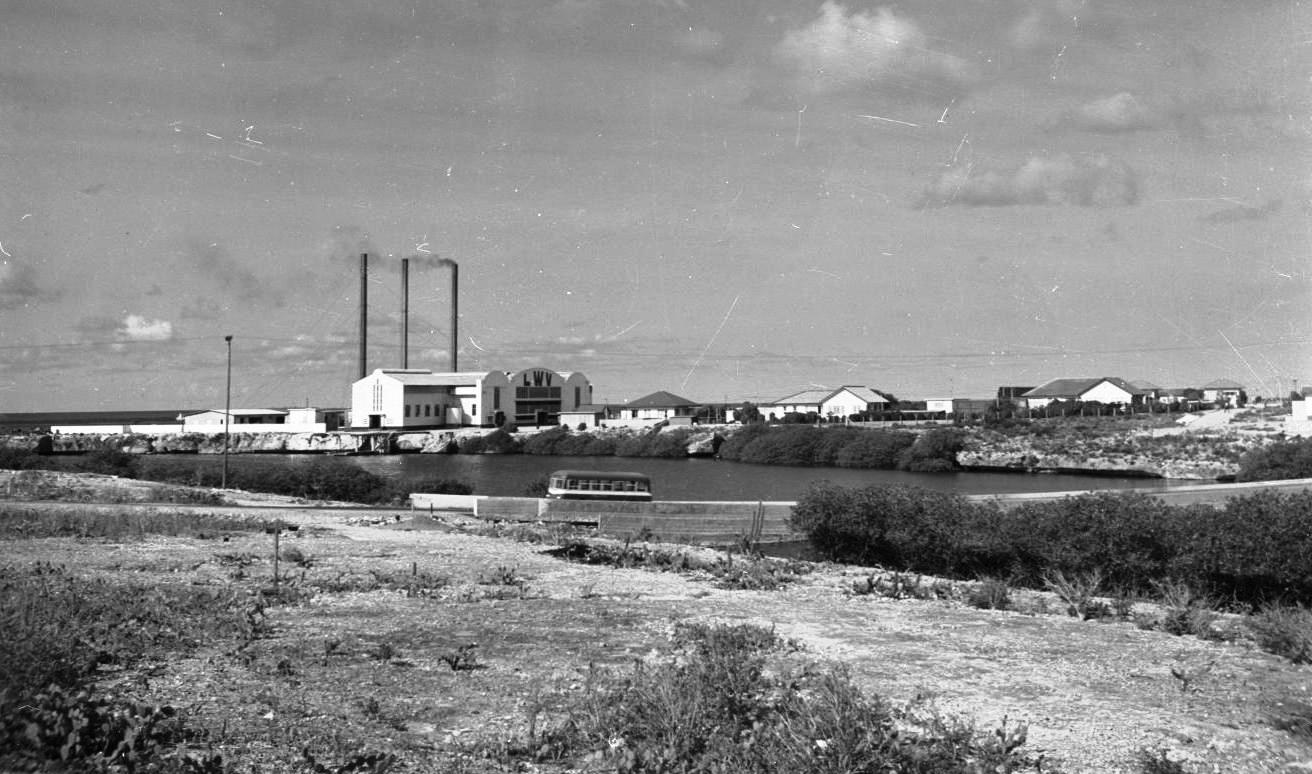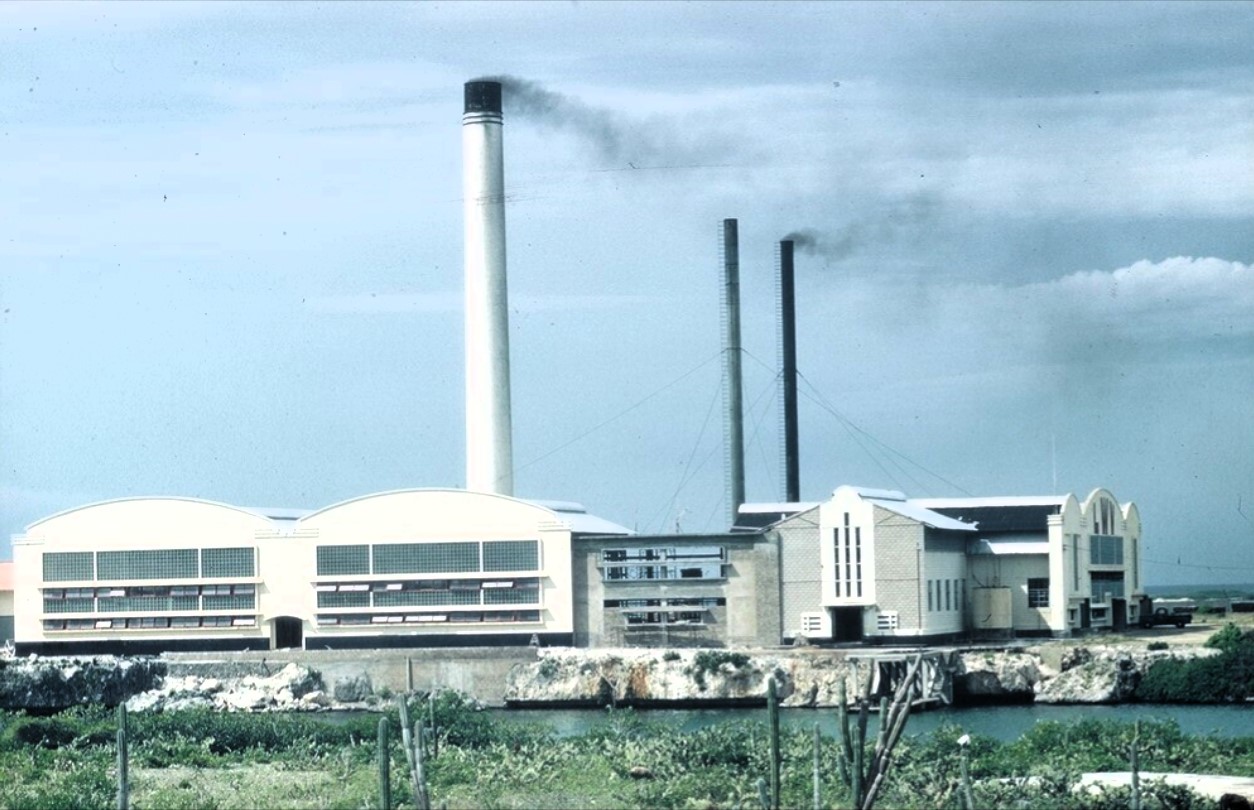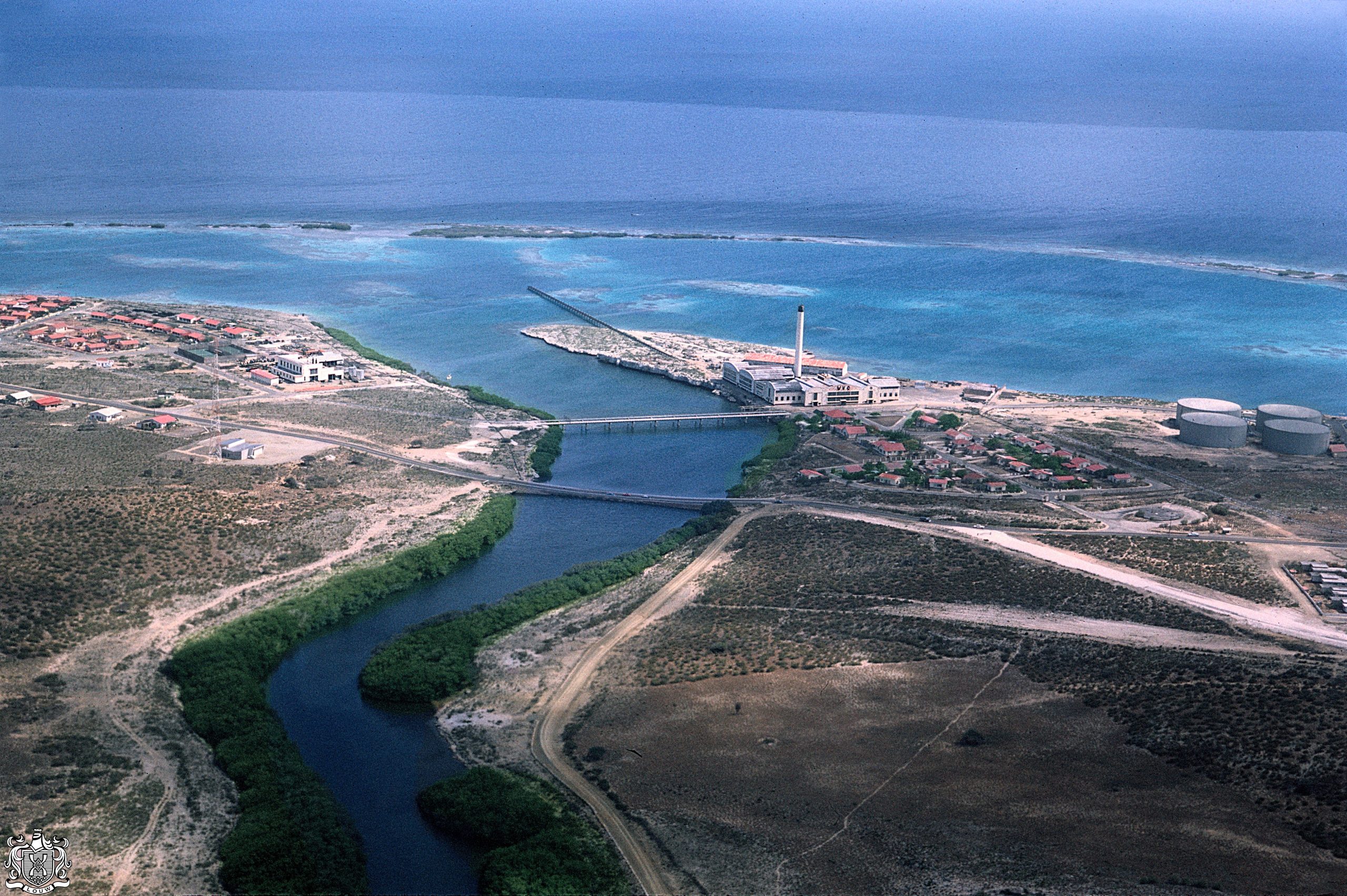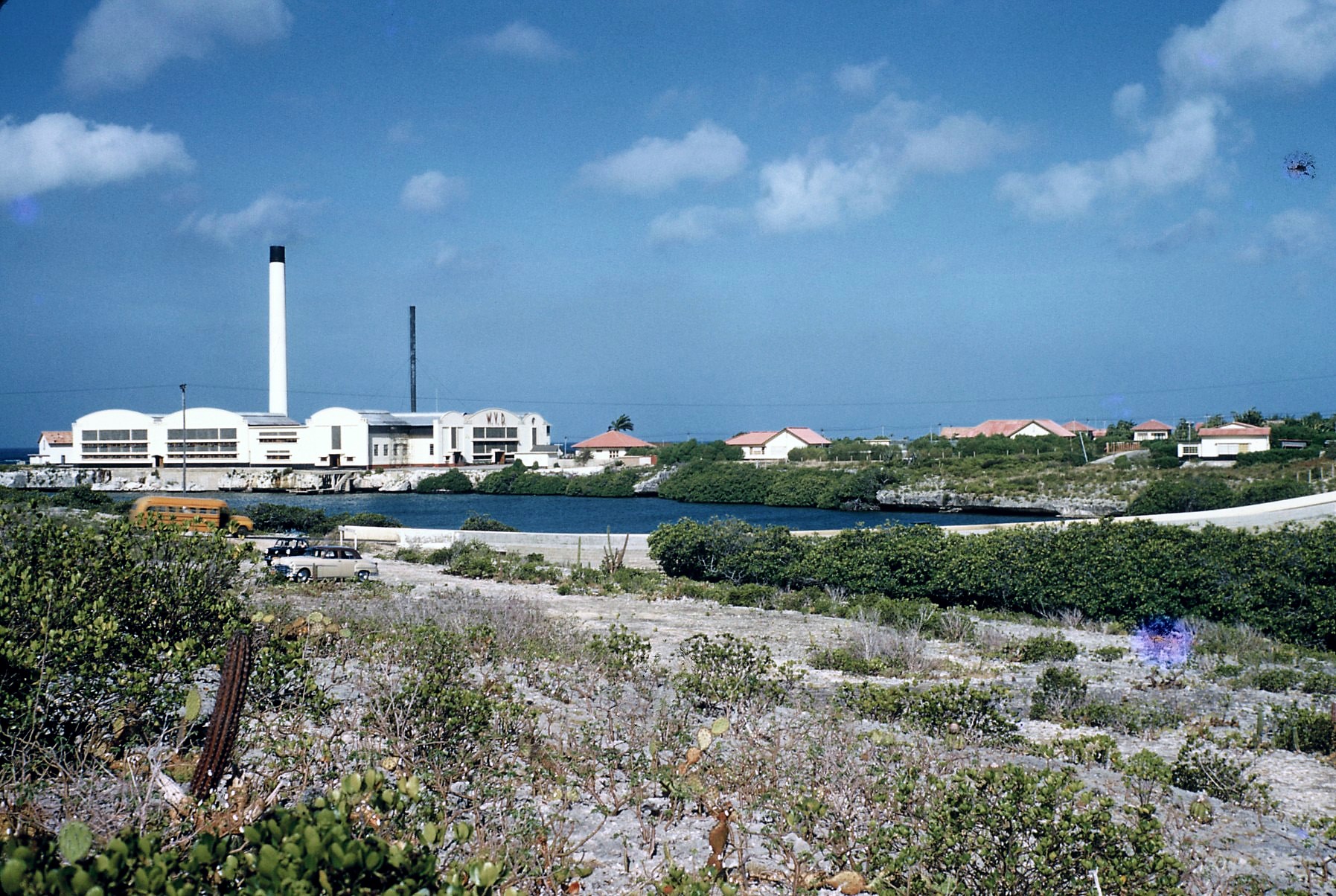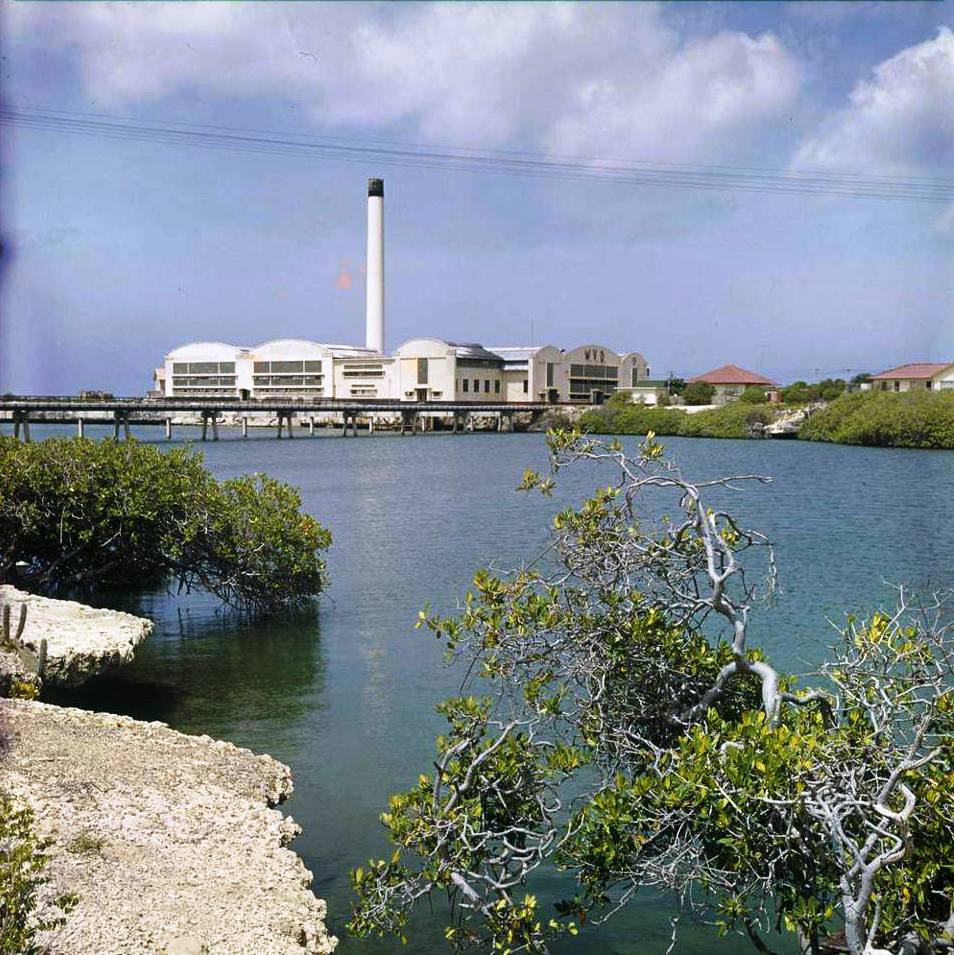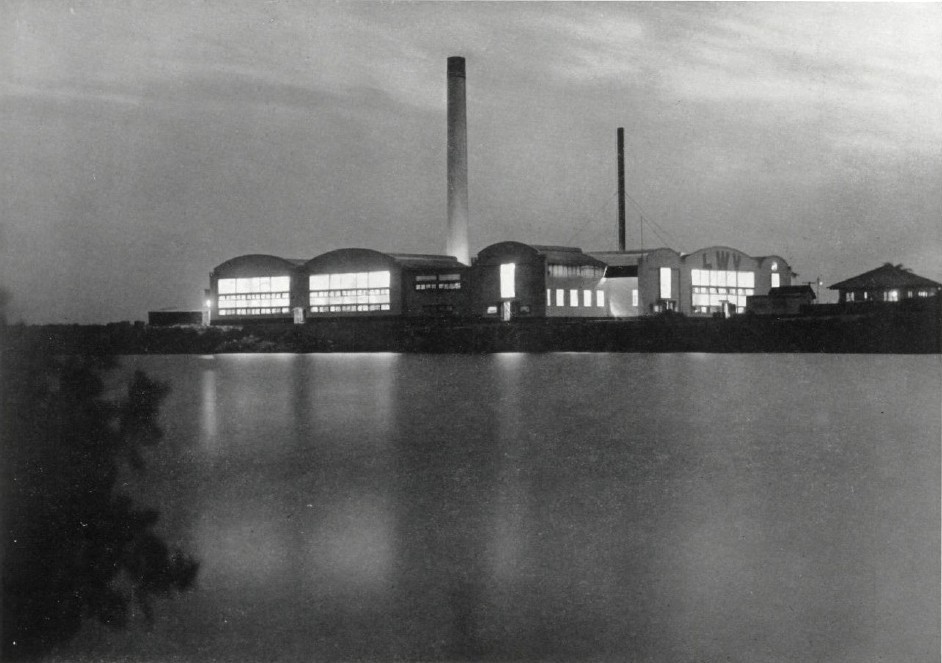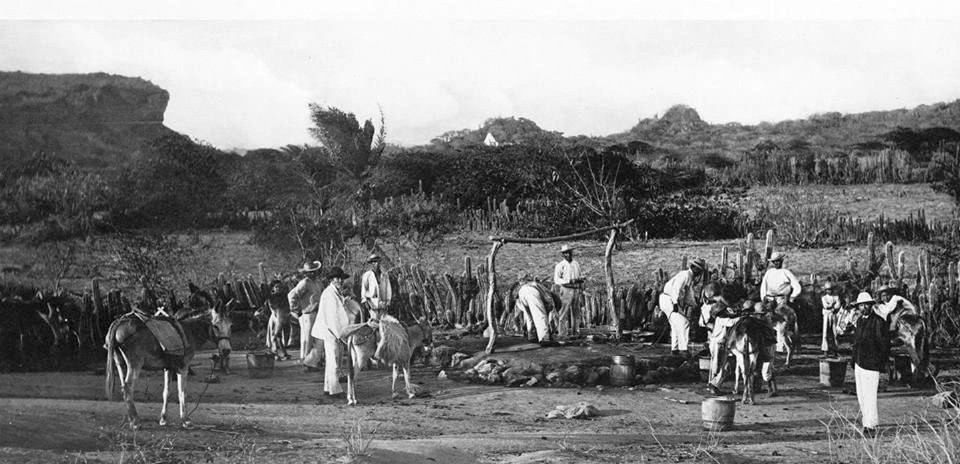| Location: | Balashi |
| Year Built: | 1928 – 1932 |
| Monument status: | demolished |
| Category: | Industrial Heritage |
Balashi Water Plant (LWV-WVD) * 1932
Category: Monuments Lost
The first water plant of Aruba.
The desalination history of Aruba started more than a hundred years ago with the production of processed water around 1903 at the Gold Mining Company (1899-1916). Even that early, it was obvious that the groundwater and rainwater reserves were insufficient for the physio-chemical gold extraction process.
The inhabitants of Aruba used to get their water from the few wells which existed on the island, not more than about 5 or 6. To name a few of them: Pos Grandi in between Pos Chikito and Savaneta; the water reservoir at Mangle Corá, just off Baby Beach; the fresh water source of Fontein on the North Coast, and the one behind Quinta del Carmen, Bubali.
In the picture from 1903: the well at Mahuma, near Canashito.
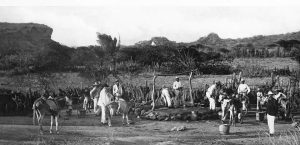
Donkeys were used to get the water from the wells to the houses, where the little rain water that fell was collected in cisterns. Water was collected and extracted from ‘tankis’ for irrigation purposes. Tankis are water reservoirs behind dams, such as in Tanki Lendert, Tanki Flip etc.
When the Lago Oil and Transport Company was established in Aruba, water was imported from the USA by special water tankers.
As this way of water distribution could not facilitate the growing population of the island, the L.W.V. (Lands WaterVoorzieningsdienst), established in Curaçao, decided to build a water desalination plant on Aruba in 1928; it opened in 1932. It produced distilled water for drinking and cooking, but also for washing clothes, flushing the toilet and watering the garden.
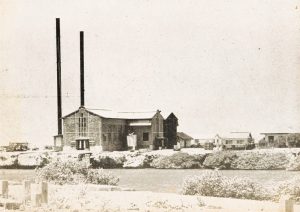
The LWV Water Plant was built near the Spaans Lagoen inlet; it was a central location on the coast called Balashi.
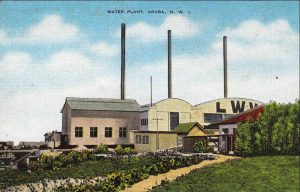
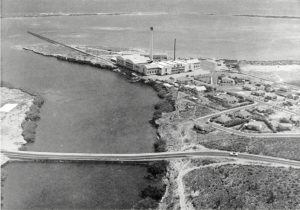
A number of houses were built in front of the LWV building, to house staff and other employees.
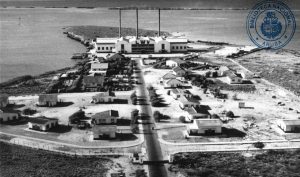
Water reservoirs were built not far from the water plant, at Kibaima, at a height of about 50 meters. From there water pipes were laid to Oranjestad and San Nicolas. In 1934, 454 homes were connected. To assure enough pressure on the water pipes, two water towers were built in 1939, both in Oranjestad and in San Nicolas.
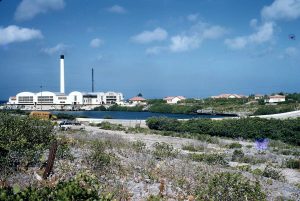
From 1932 to 1983 drinking water and industrial water were produced using the Multi Effect thermal desalination technology. Several systems were adopted, like Weir Evaporators in 1932 and those of Aqua-Chem between 1983 and 1999. The desalination process is achieved by cascading sea water down over a bed of natural crushed coral. The coral serves as an economical source of calcium carbonate (lime stone) which dissolves at a controlled rate.
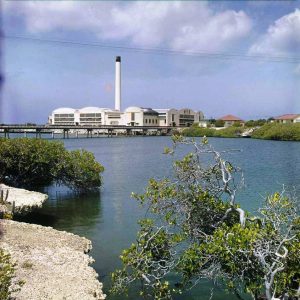
When the new water plant, WEB (Water- en EnergieBedrijf = water and utility company) was built at the site where it still stands now, the old and obsolete water plant from 1932 was demolished. The ‘bario’ for staff and employees is still there.
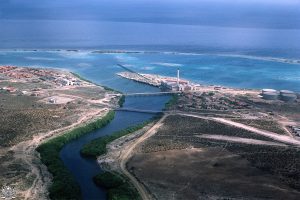
The high-quality Aruban water is known as ‘Balashi Cocktail’ and rightly so. Not to be confused with Balashi Beer, made out of the same delicious water . . .
